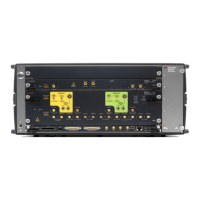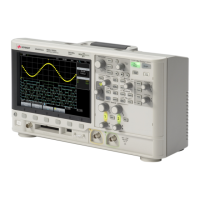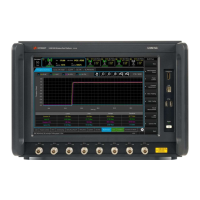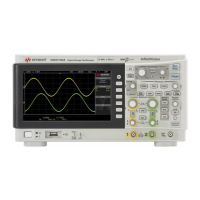Keysight M8000 Series of BER Test Solutions User Guide 447
Setting up Patterns 7
It contains two sub-states:
• Loopback.Active - Loopback.Active is a substate where the
loopback test is active. The loopback master is sending
data/commands to its loopback slave. The loopback slave is either
looping back the data or detecting/executing the commands it
received from the loopback master.
• Loopback.Exit - Loopback.Exit is a substate where a loopback
master has completed the loopback test and starts the exit from
Loopback.
SuperSpeedPlus uses some additional LTSSM states to configure the 10G
operation mode. LFPS handshake is divided in more states SCD1.LFPS,
SCD2.LFPS (SuperSpeedPlus Capability Declaration) and LBPM (low
power signaling mechanism for two SuperSpeedPlus ports to
communicate with each other).
Link Training Methods
Following are the link training methods for USB 3.0 and USM 3.1:
• WarmReset (only for Devices – upstream ports)
A WarmReset generated by downstream port to upstream port; done
when ‘Device’ is selected. A WarmReset consists of a continuous LFPS
(Low Frequency Periodic Signal).
Loopback Training
Loopback testing provides a standard way to quantify the bit error rate
(BER) for established links between host and device. There is one loopback
master and one loopback slave in the loopback configuration. The
loopback master is the port that has the Loopback bit asserted in TS2
ordered sets. A loopback slave is the port that retransmits the symbols
received from the loopback master. Master checks returned data for
errors.
Loopback.Active is a sub-state where the loopback test is active. The
loopback master is sending data/commands to its loopback slave. The
loopback slave is either looping back the data or detecting/executing the
commands it received from the loopback master.
Sequence
For performing compliance tests the DUT has to be ‘trained’ into loopback
mode. The pattern sequencer available in the M8070A software is able to
set up a USB 3.x DUT into the specific loopback mode. The sequencer is
also able to send compliance pattern to the DUT and can compare the
received pattern with expected pattern for measuring e.g. bit error rates.

